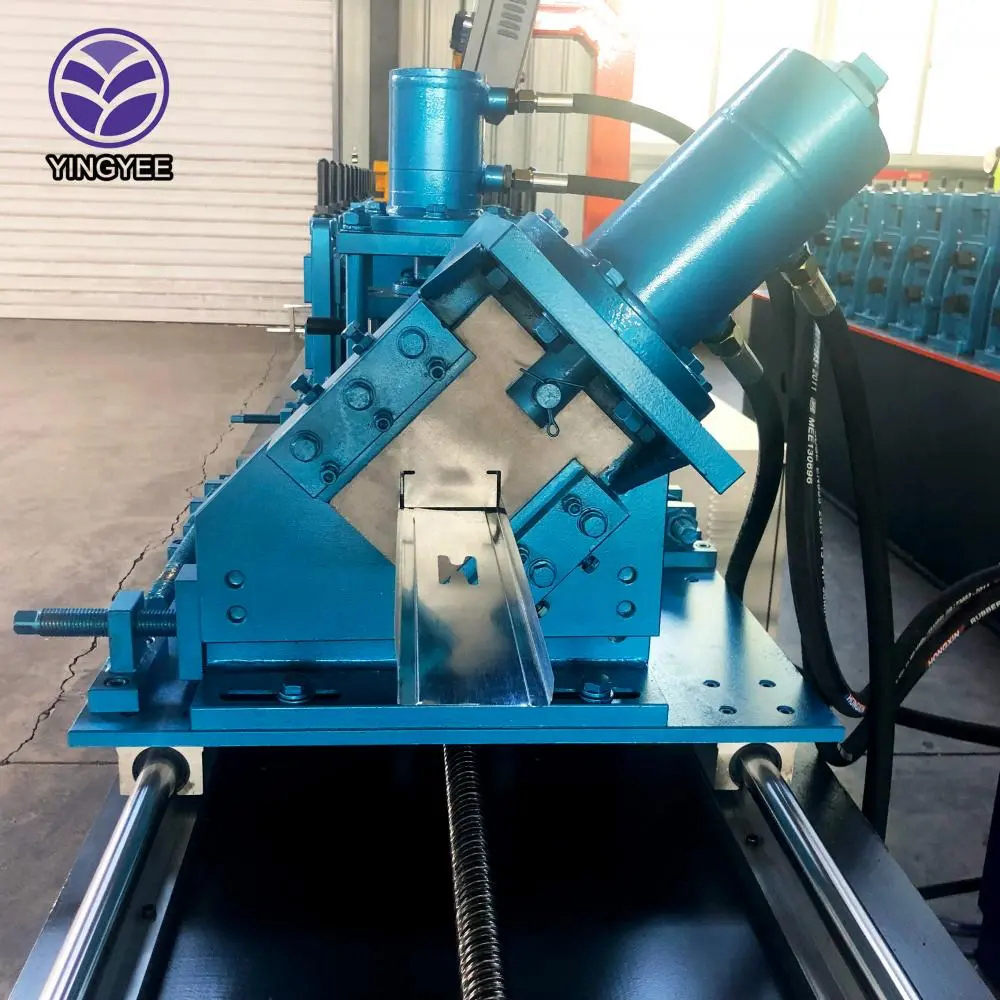
The Study of Roll Forming Machines An Overview
Roll forming machines have become an essential piece of equipment in the manufacturing industry, particularly known for their efficiency in producing various metal profiles. These machines utilize a continuous bending operation to shape metal sheets into desired cross-sections, making them indispensable for industries such as construction, automotive, and appliance manufacturing.
How Roll Forming Machines Work
At its core, a roll forming machine consists of a series of rollers and stations that gradually bend a flat metal strip into a specific shape. The process begins with a coil of metal, often made from steel or aluminum, which is unwound and fed into the machine. The material is then guided through a series of rollers. Each roller slightly bends the metal until the final desired profile is achieved. The precision of this process depends on various factors, including the design of the rollers, speed of operation, and the material properties.
The flexibility of roll forming machines allows for a wide range of profiles, from simple shapes like angles and channels to more complex designs like Z-sections and U-profiles. This versatility is one of the key advantages of using roll forming in production.
Benefits of Roll Forming
One of the primary benefits of roll forming machines is their efficiency. Once set up and calibrated, these machines can produce large volumes of uniform products with minimal waste. The continuous process also reduces lead times compared to other manufacturing techniques, such as stamping or machining.
Additionally, roll forming is a cost-effective solution for creating lightweight yet sturdy components. The process creates a stronger final product, as the grain of the metal remains uninterrupted, enhancing its structural integrity. This is particularly important in sectors where durability and weight reduction are crucial, such as in the automotive industry.

Applications of Roll Forming
Roll forming machines are utilized in a multitude of applications. In the construction sector, they are frequently employed to create metal roofing, window frames, and various structural components. The automotive industry benefits from roll forming in the production of chassis components and other frame parts, where precision and strength are paramount.
Moreover, roll forming is also used to manufacture products for the appliance sector, such as the frames for refrigerators and washing machines. With the trend towards lightweight and environmentally friendly designs, the demand for roll-formed parts continues to grow as companies seek efficient manufacturing solutions.
Technological Advancement in Roll Forming
Recent advancements in technology have further enhanced the capabilities of roll forming machines. The integration of computer numerical control (CNC) systems allows for greater precision and flexibility in production. Manufacturers can now easily adjust the machine to create different profiles without extensive downtime for changeovers. Additionally, improvements in materials technology enable the use of high-strength steels, which further expands the range of applications for roll-formed products.
Furthermore, the growing emphasis on sustainability has spurred innovations in roll forming processes that aim to reduce energy consumption and waste. Modern roll forming machines are increasingly being designed to minimize their carbon footprint, aligning with global trends toward more sustainable manufacturing practices.
Conclusion
In conclusion, roll forming machines are a vital technology in the landscape of modern manufacturing. With their ability to produce high-quality, precise metal components efficiently, they serve a wide range of industries. As technological advancements continue to shape the future of roll forming, the possibilities for new applications and improved manufacturing processes are limitless. Whether in construction, automotive, or appliances, the role of roll forming machines will undoubtedly grow, pushing the boundaries of what is possible in metal fabrication.